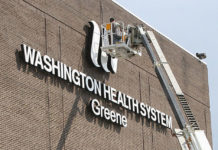major shortages in major shortages in the global heroin market. Despite indications of market stabilization and even decline in Western and Central Europe since the late 1990s, there are also “early signs” of a surge in the heroin market in some regions of Europe.
The report pointed to an uptick in heroin trafficking in the Americas, with seizures of heroin and morphine increasing from an average of 4 tons, between 1998 and 2008, to 7 tons per year, from 2009 and 2014. The increase was in line with a rise of opium production in Latin America during the same period.
Despite the trends, global efforts have been made to curb the increasing rate of opioid abuse. Harm reduction responses, such as the increased availability of Naloxone in the U.S. and Australia, as well as increased adoption of revised opioid prescription guidelines have created safeguards to reduce fatal overdoses. Marketing campaigns and national conferences have also aided in raising awareness on the dangers of opioid misuse.
Yet, researchers stated that in order to preserve reduced opioid abuse, drug manufacturers need to work with medical and public health personnel, and anyone who has the ability to prescribe opioids need to have research-driven information to help patients alleviate pain and avoid addiction and diversion.















